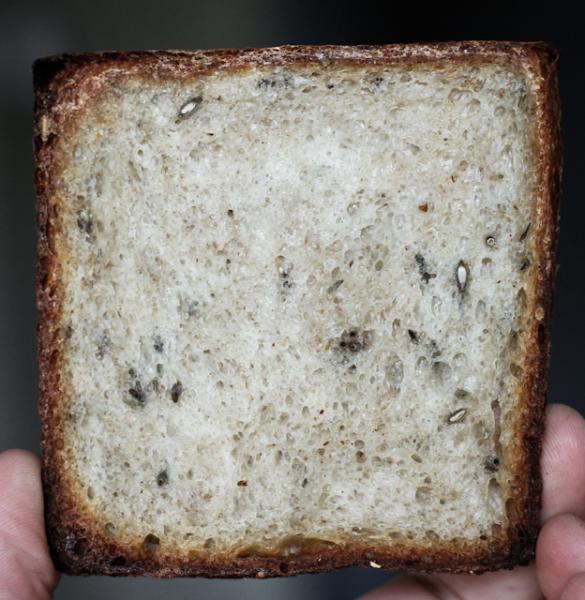Blog posts
Brown rice porridge crispbreads
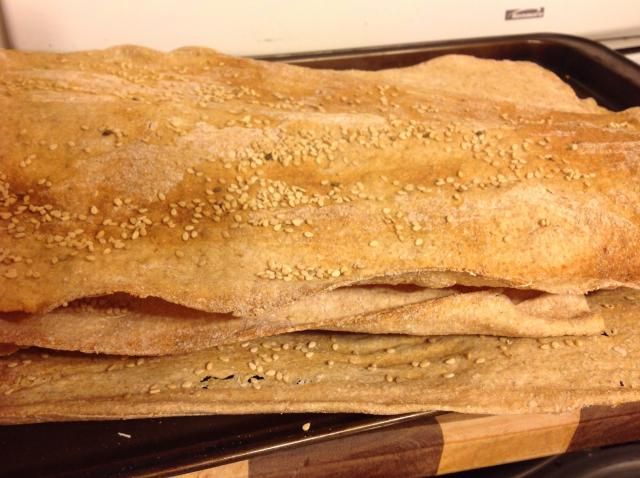
In Tartine No. 3, Robertson says that all of the bread recipes (with the exception of the Rene-style loaves, which are too seedy) can be adapted for crispbreads simply by decreasing hydration to 50-60%. I decided to try this with the brown rice porridge bread, as I think rice crackers are tasty. I added some sesame seeds on top of most of them.
I wound up using:
250 g BRM whole wheat flour
250 g KA bread flour
- Log in or register to post comments
- 3 comments
- View post
- Catomi's Blog
Farmer's Market Week 37 (The Ogre) and more

So I've been hooked to "The Ogre" adaptation of Steve Scott's Grain de Lin from Breadlines Recently it was brought to my attention indirectly that the hydration is actually supposed to be 109% while I've been thrilled with the loaves I made @ 102%. I've made a couple small batches of this and decided I should share with my farmer friends as it is so good. My adaptation replaced the "Lin" with "Oger" or flax with barley along with the decrease of hydration by 7%. I'm calling it The Ogre Loaf.
- Log in or register to post comments
- 9 comments
- View post
- Anonymous's Blog
Yeast Water Whole Grain Breakfast Rolls w/ Snockered Fruit and Dark Chocolate

These sort of cinnamon rolls are similar to the one’s here:
http://www.thefreshloaf.com/node/32275/yeast-water-cinnamon-rolls
With some differences The 72% Ghirardelli Dark chocolate that replaced the original chocolate chips. We used a 70% whole grain wheat spelt and rye flour mix and the dough weight is about 400 g grams less making there ‘mini’ rolls.
- Log in or register to post comments
- 10 comments
- View post
- dabrownman's Blog
Ars Pistorica- 0 to Starter in 3 Days
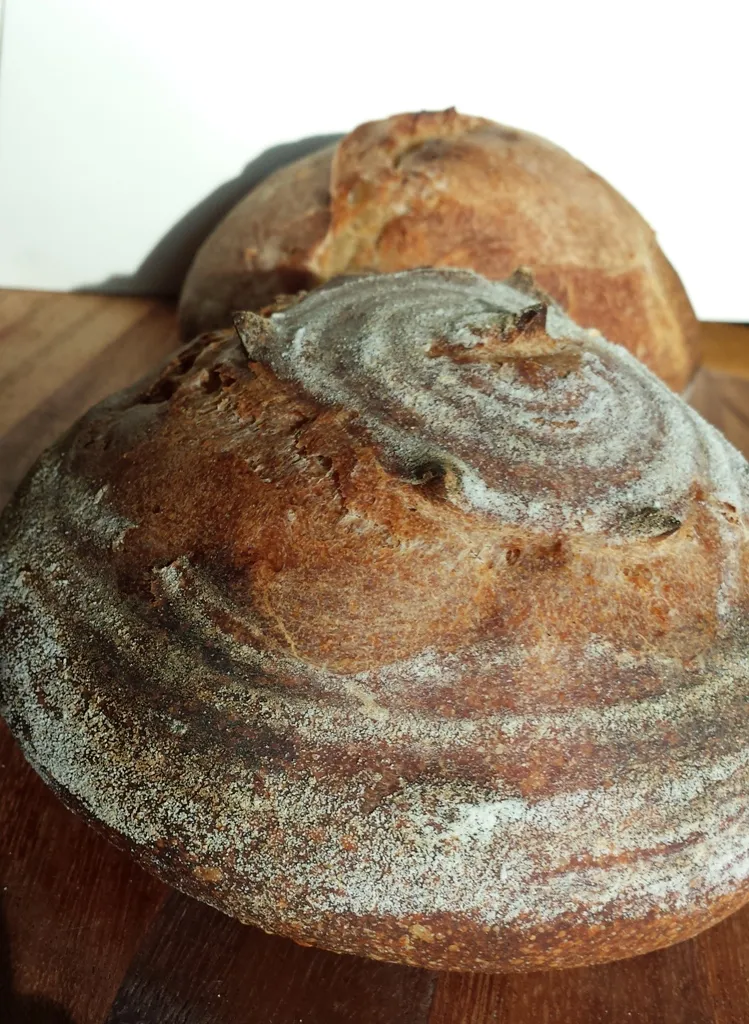
If you have thought about getting a sourdough culture going but don't feel up for a lot of watching and waiting, I highly recommend the method outlined by Ian on his now rather empty Ars Pistorica blog. I nearly posted yesterday, because it sure looked like sourdough starter and tasted like it, and had lots of little bubbles. But, I feel, the proof is in the pudding, or my old friend, sourdough bread. So, here I am Sunday morning with two little loaves that managed to surprise me with some solid oven spring 10 hours after bulk fermentation start.
- Log in or register to post comments
- 4 comments
- View post
- hungryscholar's Blog
Crumb shot from Hamelman's Five Grain - June 21 2014
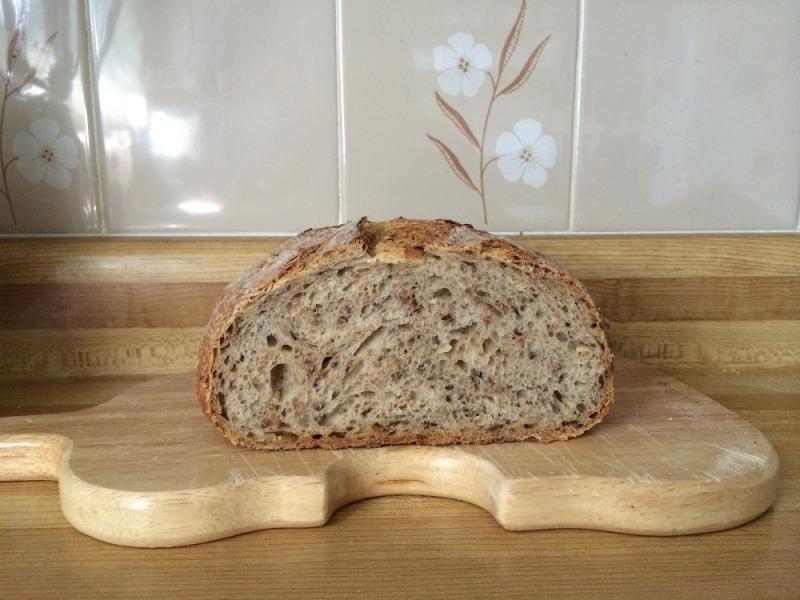 Here is the crumb shot from the Hamelman Five Grain Sourdough with Rye Sourdough.
Here is the crumb shot from the Hamelman Five Grain Sourdough with Rye Sourdough.
- Log in or register to post comments
- 8 comments
- View post
- Jane Dough's Blog
My Saturday Bake - June 21, 2014

This weekend I baked Jeffrey Hamelman's Five Grain Sourdough with Rye Sourdough. I followed the instruction carefully. It is a very slack dough but handles very nicely. It has a very pleasing taste, but not as pronounced as I would have liked. Next time I make it I will investigate how to make the starter more tangy.
- Log in or register to post comments
- 2 comments
- View post
- Jane Dough's Blog
Daniel Leader Bakes - Auvergne Rye Baguettes (with Chorizo)

- Log in or register to post comments
- 6 comments
- View post
- ElPanadero's Blog
Five Grain Levain Bread Baked from Frozen
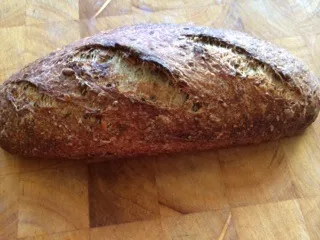
When I first made this bread (recipe currently on the top right of FL), I froze two loaves. I baked the first of the frozen loaves today, and it really came out well. I defrosted the dough in the fridge during the day yesterday, and did a stretch and fold and shaping before putting it into the covered baker to retard in the fridge overnight.


- Log in or register to post comments
- 6 comments
- View post
- CAphyl's Blog
First few sourdough loaves

I just bought and started experimenting with Tartine Book No. 3. I don't have the others, but I did some reading online (especially tartine-bread.blogspot.com, now girlmeetsrye.blogspot.com). Based on her recommendation, I'm working with a 100% rye, 100% hydration starter that I started at the end of May. So far I've made 3 recipes from Book No. 3, and decided to sign up here in order to start a record of my loaves where I can relate photos to recipes.
- Log in or register to post comments
- View post
- Catomi's Blog

